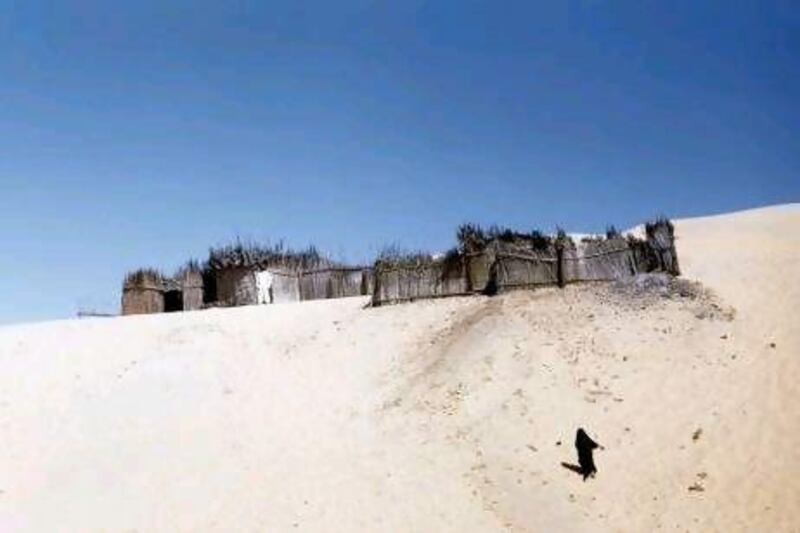??"Turned east somewhere between Markhia (A new well with sweet water at a depth of 50 feet) and Kharji Thamara," Ronald Codrai writes in his diary for June 17, 1953. "And suddenly came upon two barastis perched on the smooth back of a small dune."
The extract, and this accompanying photograph, are taken from a new edition of Codrai's book Abu Dhabi, An Arabian Album, back on the bookshelves with the photographs rescanned using the latest technology to improve colour and clarity.
Codrai arrived here in 1949 after taking a job with Petroleum Concessions Limited, which held the rights to look for oil in what was then called the
Trucial States.
Codrai was based in Dubai, but his work took him across the emirates. His day job may have been searching for oil, but his passion was photography.
As a result, he left behind an astonishing record of a way of life among the peoples of the desert that within a decade would be vanishing forever.
Abu Dhabi, published by Motivate Publishing, is a collection of dozens of Codrai's photographs taken until his departure in the mid-1950s, along with a detailed account of his travels and extracts from his diary. Almost nothing survives of that which he captured. Barasti, or arish, houses are now rarely seen outside heritage villages while the location of the well between Markhia and Kharji Thamara is long forgotten. Codrai himself died in 2000, but his legacy, in words and pictures, lives on.
* James Langton
Time Frame is a series that opens a window into the nation's past. Readers are invited to make contributions to yourpics@thenational.ae
Barastis: A vanishing way of life
This photo of "two barastis perched on the smooth back of a small dune" was taken by the oil exploration worker Ronald Codrai in 1953 is featured in a new edition of the book Abu Dhabi, An Arabian Album.

Editor's picks
More from the national






